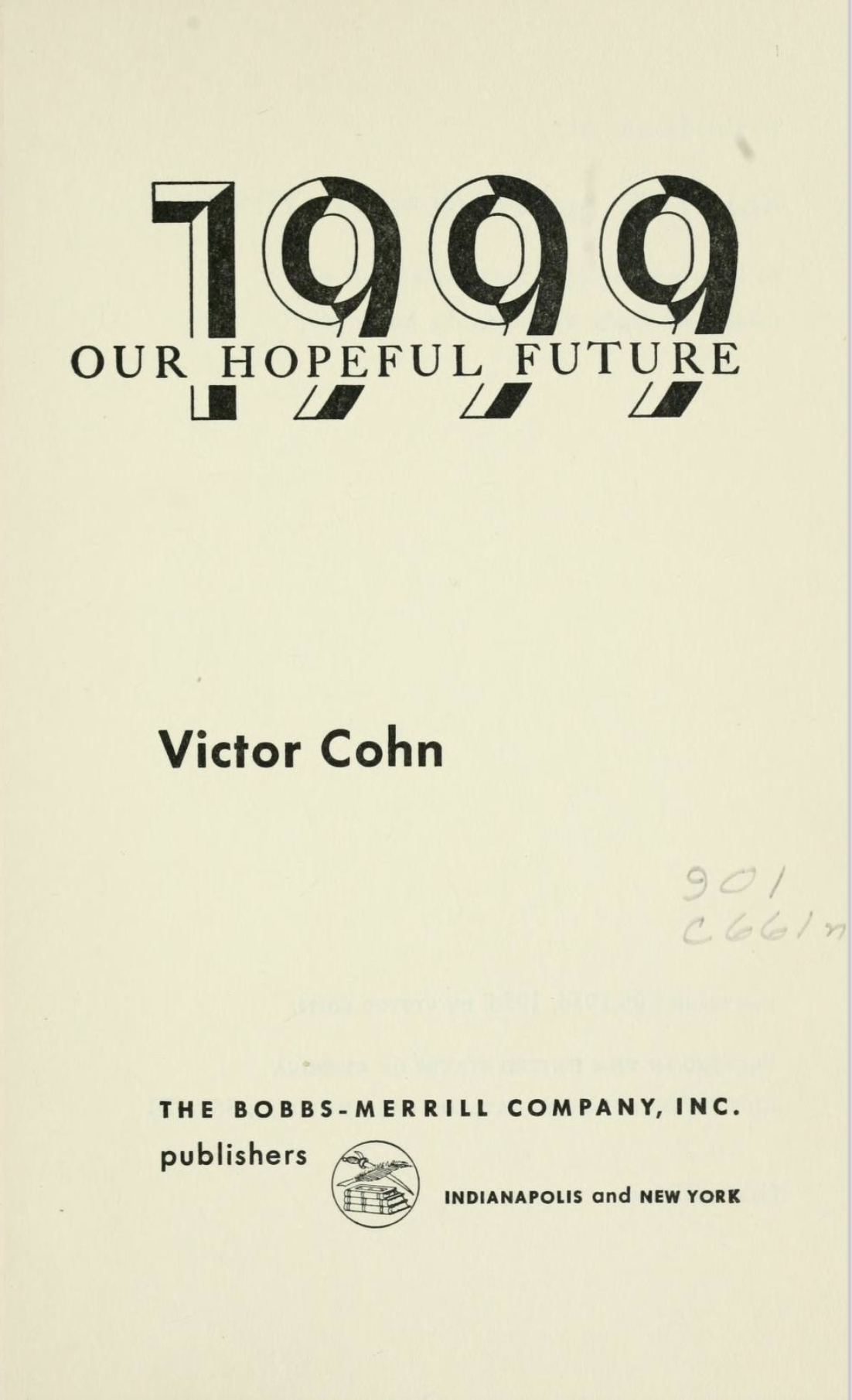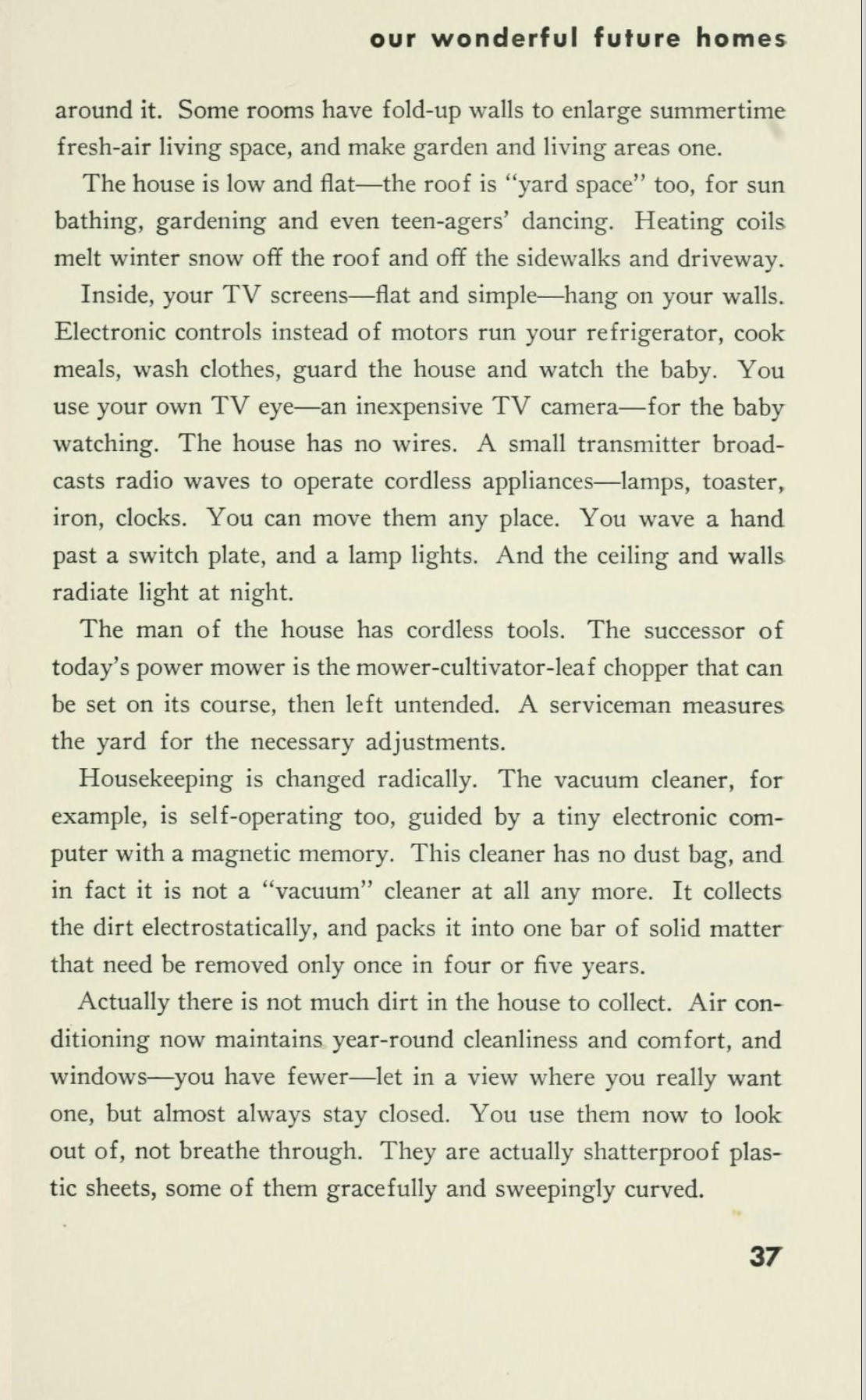Yesterday’s Tomorrows
The Year 2025, as foreseen in 1925
Welcome to 2025!The scientist Archibald Montgomery Low (1888-1956) is remembered as a pioneer of drone aircraft. He also liked to make predictions about the future. Back in the early 1920s he published a book titled The Future in which he speculated about what the world would look like in 2025, as well as in the year 3000.
Some of his predictions were quite accurate. Others were more bizarre.
What I judge to be his accurate predictions:
"The average man of 2025 will be awakened by a radio alarm clock."
"At breakfast... a loud speaker will take the place of a morning paper, giving him all the news, while a 'television' machine will replace the daily pictorial newspapers."
"automatic telephones will be everywhere and will get the right number at all times"
"In the evening when a business man goes to the movies he will see half a dozen films being shown at the same time on the same screen. He will glance at the program and by setting his observation apparatus to the key number of the film he wishes to see, he will cut out all but that one."
And his inaccurate ones:
"baldness will be almost universal"
"[The man of 2025] will then go to his office in his own car, which will be carried by an elevator to the door of his office. If he has to go anywhere on foot moving sidewalks will convey him without exertion."

News of Cumberland County - Sep 15, 1925
You can read Low's book at the Internet Archive. I think he would have liked the fact that his book is available on-demand via "wireless."
Below are some illustrations from the book.
More info: "Scientist's 'ruthlessly imaginative' 1925 predictions for the future come true – mostly" (The Guardian)



Posted By: Alex - Wed Jan 01, 2025 -
Comments (6)
Category: 1920s, New Year, Yesterday’s Tomorrows
2002: Child Life One Hundred Years from Now
We have a theme on WU of predictions of a future we have already reached. Some are way off, others more accurate. You may decide for yourself how this book fares. While we do not yet have personal winged flight for kids, we do have telephones with visuals.Read the whole thing here.



Posted By: Paul - Sun Oct 20, 2024 -
Comments (0)
Category: Predictions, Yesterday’s Tomorrows, Children, Books, Science Fiction, 1900s
International Bowling Fashion Show
This is definitely what I'll wear if I go bowling in the future.Also, I'm not sure what the "International Bowling Fashion Show" was. The details in the clips below are all that I could find.

(l) Ashley News - July 23, 1964; (r) Newark Advocate - July 11, 1964
Posted By: Alex - Sat Jul 27, 2024 -
Comments (2)
Category: Fashion, Sports, 1960s, Yesterday’s Tomorrows
Bushells Tea: The City of Tomorrow
Posted By: Paul - Sat Apr 13, 2024 -
Comments (0)
Category: Predictions, Yesterday’s Tomorrows, Soda, Pop, Soft Drinks and other Non-Alcoholic Beverages, 1940s, Australia
1963 Prediction of Mobile Phones
In 1963 the Mansfield News-Journal predicted that, "Some day, Mansfielders will carry their telephones in their pockets."So when did the first phone debut that could be carried in a pocket? Depends on the size of the pocket, I guess. But I think it was arguably the Motorola StarTAC, that came out in 1996 — 33 years after the News-Journal prediction.

Mansfield News-Journal - Apr 18, 1963
Posted By: Alex - Fri Mar 15, 2024 -
Comments (4)
Category: Technology, Telephones, Yesterday’s Tomorrows
“Tomorrow’s bombs will destroy fires”
Unfortunately, Seagram's got this prediction totally wrong. Forest fires are now a far bigger problem than they were in the 1940s.
Newsweek - Aug 14, 1944
Posted By: Alex - Sat Feb 03, 2024 -
Comments (0)
Category: 1940s, Yesterday’s Tomorrows
Sheaffer Pen accurately predicted the future
In 1963 and 1964, Sheaffer Pen ran an ad campaign in which they made a variety of predictions about future technologies of the 21st century. The company contrasted these technologies, which must have seemed a bit pie-in-the-sky at the time, with the timeless performance of a Sheaffer pen. The surprising thing is that all their predictions have come true: instant mail delivery, checkbooks that balance themselves electronically, portable visual phones, ring tape recorders, camera sunglasses, credit card rings, electronic translators.They don't all exist in the specific form that Sheaffer imagined (credit card rings?), but in each case the equivalent or better exists.





Newsweek - Sep 23, 1963
Posted By: Alex - Sun Jan 21, 2024 -
Comments (4)
Category: Technology, Advertising, 1960s, Yesterday’s Tomorrows
1999: Our Hopeful Future
Like most predictive non-fiction, this 1956 volume has both hits and misses throughout. But I was amazed by one page, which predicts flatscreen TVs, a Roomba, and household surveillance cameras, bing-bang-boom!Read the whole thing here.


Posted By: Paul - Sun Oct 01, 2023 -
Comments (3)
Category: Predictions, Yesterday’s Tomorrows, Books, 1950s
No more queues in grocery stores
We got the computerized food scanners, but we've still got checkout lines. What happened?
North Bay Nugget - May 29, 1974
Posted By: Alex - Mon Sep 18, 2023 -
Comments (4)
Category: Technology, 1970s, Yesterday’s Tomorrows
What will the telephone be like when I grow up?
Perhaps some day in the future you may just speak the number into the transmitter and get your party automatically.
The introduction of universal direct dialing was a pretty safe guess in 1953, since direct dialing had, by then, already been introduced in some places.
It's more impressive that the ad writers also successfully predicted the introduction of voice recognition technology.

Life - May 18, 1953
Posted By: Alex - Tue Jul 11, 2023 -
Comments (1)
Category: Technology, Telephones, 1950s, Yesterday’s Tomorrows

| Who We Are |
|---|
| Alex Boese Alex is the creator and curator of the Museum of Hoaxes. He's also the author of various weird, non-fiction, science-themed books such as Elephants on Acid and Psychedelic Apes. Paul Di Filippo Paul has been paid to put weird ideas into fictional form for over thirty years, in his career as a noted science fiction writer. He has recently begun blogging on many curious topics with three fellow writers at The Inferior 4+1. Contact Us |




